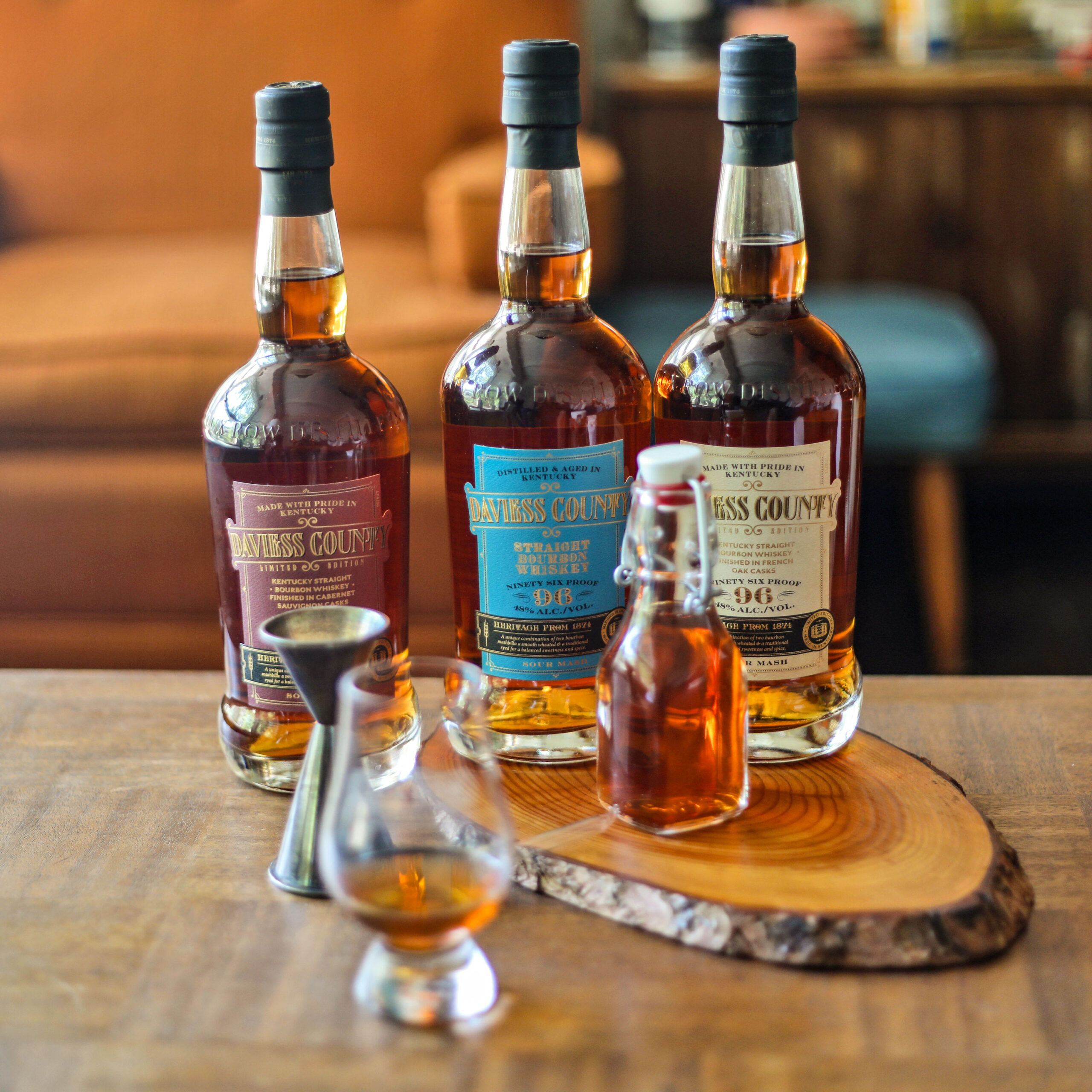Whiskey’s warm, welcoming, amber-brown hue sets it apart from many other spirits on the market. It’s why you can usually recognize a glass of whiskey on the rocks or an old-fashioned on sight.
But why is whiskey brown when so many other spirits, like vodka, gin, and silver tequila, are clear? It all comes down to aging and barrels.
From Crystal Clear to Beautifully Bold
The whiskey-making process has three main steps.
First, the distiller creates a mash–a blend of grains and water that are cooked and fermented. Next is the distilling process, during which yeast is added and alcohol is created and drawn from this mixture, then condensed and separated. Finally, the distilled liquid is aged in a barrel (for bourbon, these must be new charred American oak barrels) for as long as the distiller deems it necessary to achieve the desired flavor and color.
When the whiskey leaves the still and goes into the barrel, it’s a clear liquid known as “white dog.”
The whiskey won’t develop its color until after it spends time inside the barrels. Just like whiskey can take on some of the barrel’s individual flavor notes, whiskey also takes on the barrel’s color. As we’ve said in a blog previously, aging whiskey in barrels provides about 70% of its flavor and 100% of its color. When the whiskey is finally removed from the barrel and bottled, it’s a rich, warm brown.
Because the whiskey takes on the color of the barrel, the type of barrel used in the aging process has a major impact on it. For example, Kentucky bourbon is exclusively made with brand-new, charred American oak barrels, so this gives Kentucky bourbon a darker color than what you might find in other whiskeys aged in older or previously used barrels.
Weather also plays a massive role in whiskey production. When it’s cold out, it’s also chilly inside the rickhouse. Which means the whiskey in the barrels is less likely to interact with the wood. However, as it gets hotter, the whiskey expands, seeping into the pores of the staves and extracting color, flavor, aromas, and more. As the weather grows colder again, the whiskey is “released” from those pores and mixes back into the rest of the “juice.”
This heat cycle is vital for whiskey development. And one of the reasons Kentucky is home to such great whiskey and bourbon is because it’s climate naturally produces these heat and cold cycles throughout the year.
Is Darker Whiskey Better?
Since, just like a whiskey’s flavor, a whiskey’s color comes from its barrel, does that mean a darker whiskey is overall better? Not necessarily.
Typically, the darker the whiskey, the longer it’s been aged. But, as far as taste and superiority, that’s all up to the whiskey drinker. Any seasoned whiskey lover will tell you that they’ve had four-year whiskeys blow 10, 12, or even 20-year whiskeys out of the water.
Longer barrel aging can lead to more complex flavors, but that doesn’t always mean the whiskey is better or worse than others. Master distillers work very hard to find the right balance of when to age, how long to age whiskey for, and what to do with the whiskey once it’s done aging.
For example, here at Daviess County Bourbon, we like to finish our whiskey after it’s done aging.
Need Help With What You Prefer?
If you’re relatively new to the world of whiskey or feeling adventurous, you may want to experiment a little bit. Try some four-year whiskeys, like our classic Kentucky Straight Bourbon Whiskey versus something like our Cabernet Sauvignon Finish, which was aged for four years, then finished for about six months in Napa Valley cabernet barrels.
You may also want to try something like Old Ezra 7, which is aged for seven years before it’s bottled, or Rebel 10-Year.
These bourbons look very similar but offer different tasting notes and complexities. Regardless of what you choose, we hope you find the shade of brown spirit you prefer and enjoy it.
Cheers!








